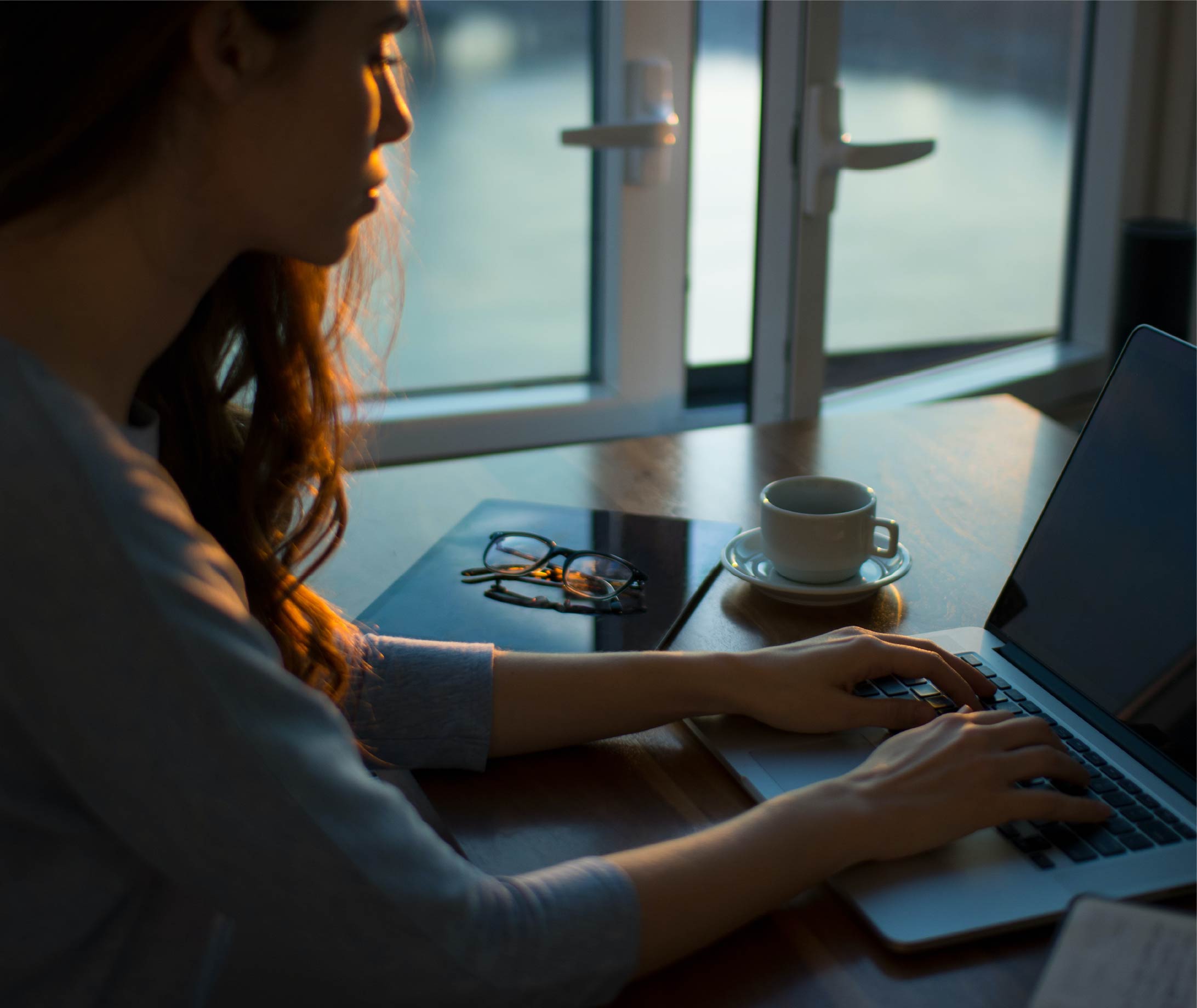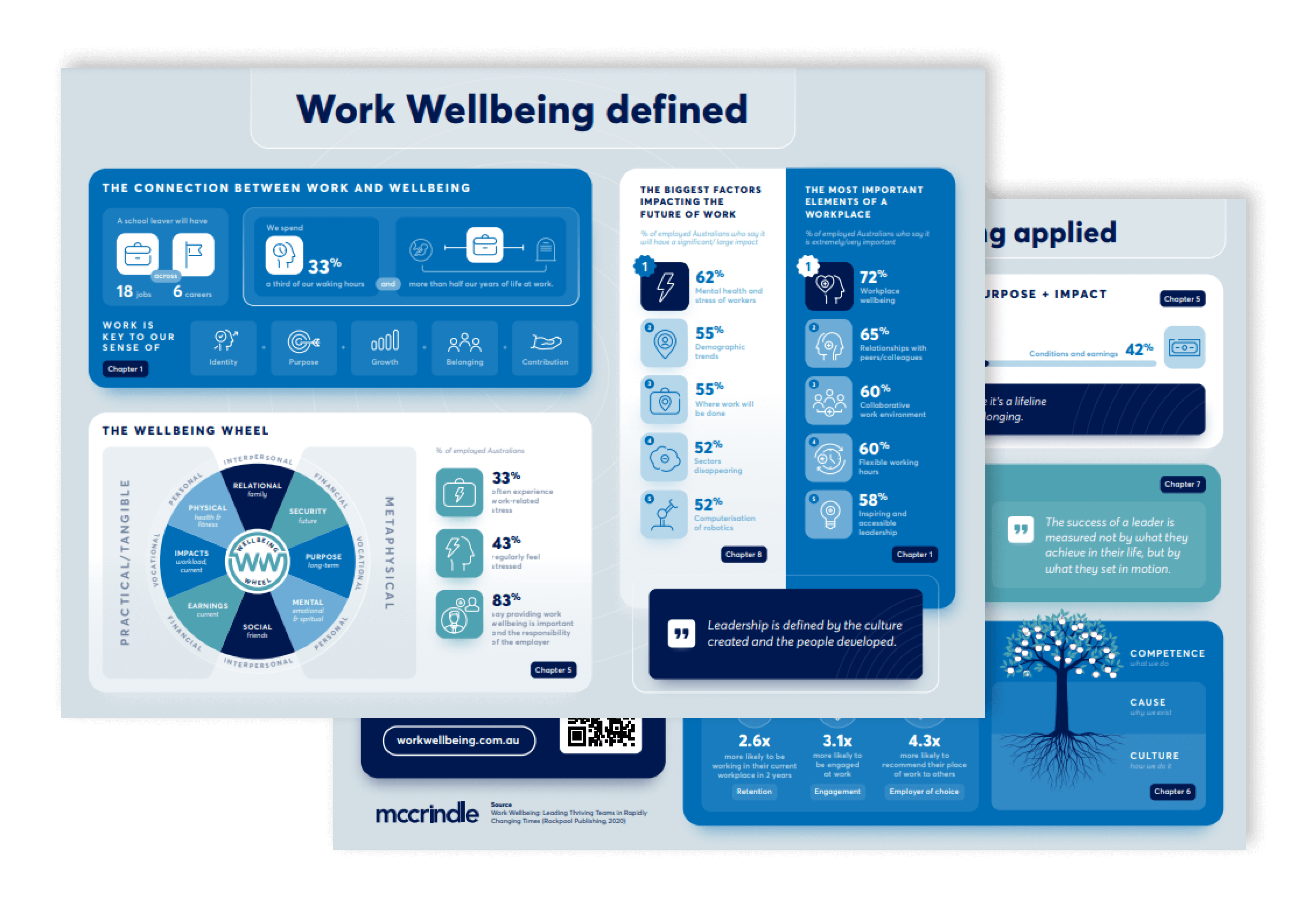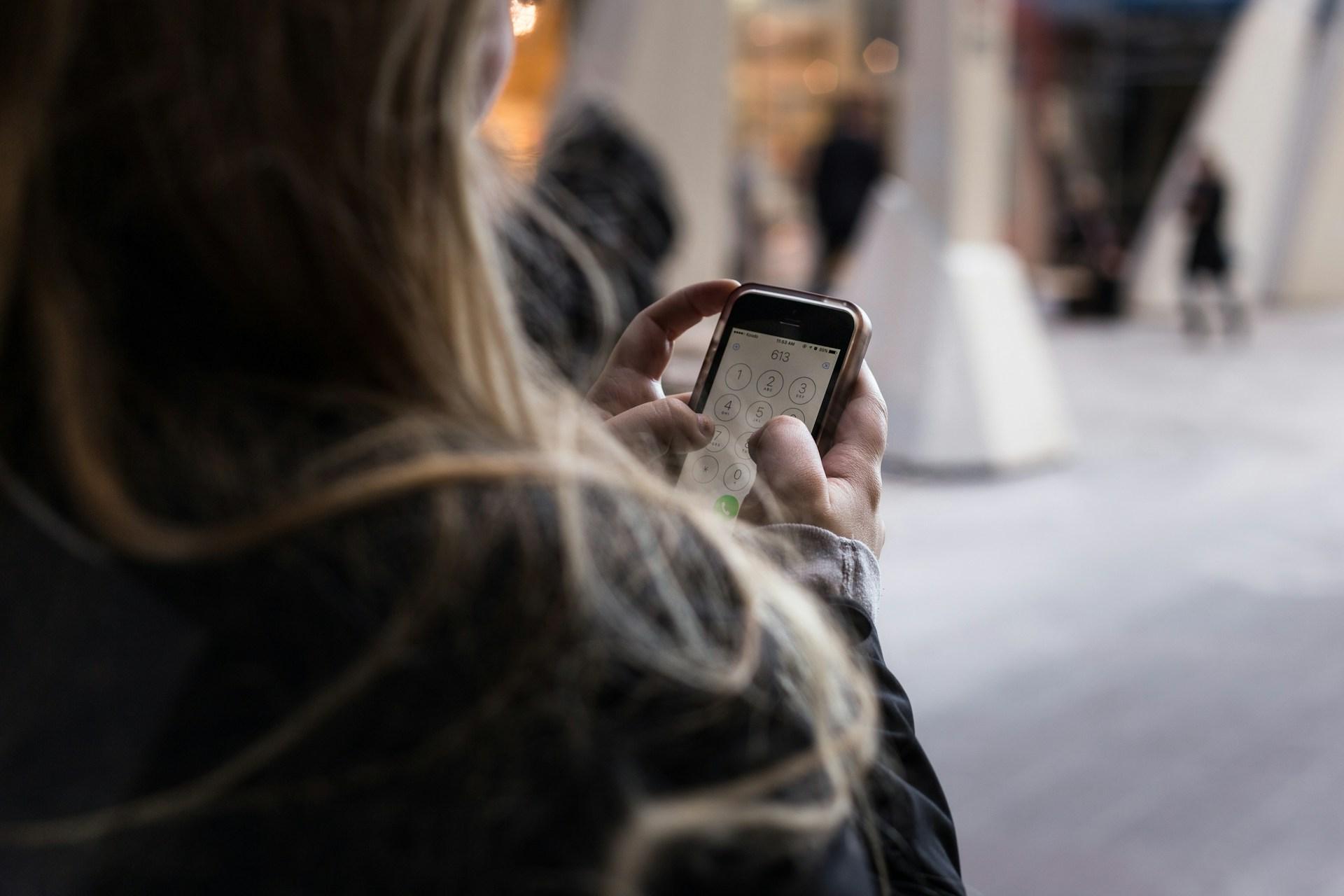Work Wellbeing
Working better in the new work normal

COVID-19 necessitated the most transformational shifts to work for perhaps a century. The most notable was when almost overnight the office bound workforce globally relocated to their homes. Our national research of 1,004 Australians showed more than a quarter of Australians (27%) worked from home during the COVID-19 restrictions.
How COVID has accelerated workplace transformation
The digital transformation of many organisations was achieved not through management strategy or a new technology solution, but by the realities of this virus. For the first time in modern history working from home became the norm and even ushered in the three-letter acronym to describe it: WFH – and it is here to stay. Most Australians who worked from home through COVID-19 reported better work/life balance (65% cf. 15% worse) and improved productivity (51% cf. 20% worse).
The best ways to support an effective hybrid work environment
While it may not be all workers, every day, most workers in this knowledge economy will have more of a regular opportunity to work a day or two from home each week or fortnight after the pandemic passes. Our research shows 78% of workers say working from home will become the new normal.
To support this hybrid work environment, leaders will do well to:
1. Double down on purpose and culture
Understandably, many businesses are in survival mode. Yet key to an organisation’s future and all the more important amidst the disparate location of staff members is communicating your purpose and investing in your culture. This helps to keep people motivated and connected, even while working from a distance. When work is enjoyable, positive, and creates a sense of belonging for people, then people do their best work.
2. Continue to invest in training and staff development
Training is key to staff attraction and retention and will continue to be important even in this new normal of people working remotely. In fact, ensuring team members have the skills to be agile in how they work and innovate in what they deliver is essential in these volatile times.
How businesses can use what they learnt about better workplace management in lockdown through the recovery period
1. Reimagine the new rather than rebuilding the old
Much of what we had pre-COVID, we will never see again. We are not moving to the next but the new. It is not a continuation of how things were, but the start of a whole new reality. Therefore, we have an opportunity as businesses to not just return to the old but to reimagine the possibilities for the future. Such a transformation requires leaders who can identify the changes and reimagine a new direction. This requires an understanding of the times and the trends. This requires the key leadership characteristic of foresight. The reason they can lead is that they see things not just as they are, but as they will be.
2. Keep the communication up and be intentional
Our national research during COVID-19 showed that while there are many benefits to working from home such as the resulting time savings (no commute), cost savings (on travel and lunches out), and better work-life integration, there are also challenges such as the blurring of boundaries, social isolation and less opportunities for collaboration. Leaders that regularly communicate with their people, are intentional about checking in with them and look for opportunities to collaborate in new ways will help their people and organisation to thrive.








